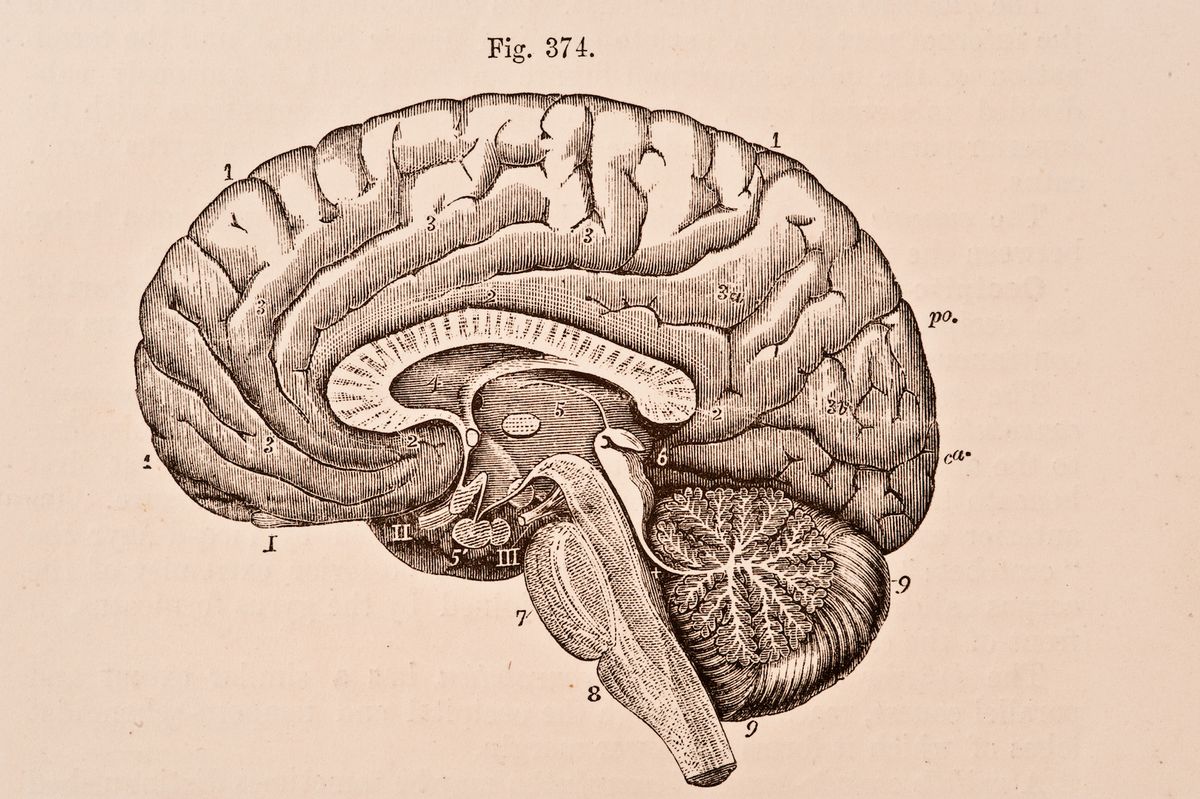The brain is an amazing organ that stores incredible amounts of information. All of the experiences, emotions, and senses we have had throughout our lives are stored in the brain which is capable of recalling and categorizing the experiences that we have lived through. It controls the thoughts we have, touch, and motor skills. Even internal dialogue —the little voice in your head that talks — is managed by the brain. Moreover, approximately 30-50 percent of people do not have an internal dialogue.
The brain and spinal cord make up the central nervous system that helps with receiving, processing, and responding to the world around us. This organ is made up of water, proteins, carbohydrates, and salts, as well as blood vessels and an intricate system of nerves throughout the brain.
The brain has two major regions of the central nervous system, known as gray and white matter. Gray matter refers to the darker, outer portion of the brain, while white matter refers to the inner section underneath. Gray matter is responsible for processing and interpreting information, while the white matter helps transmit information to other parts of the nervous system.
The brain helps regulate and receive chemicals and electrical signals through neurons. The neurons, or nerve cells, can help relay messages around your brain to help aid in everyday tasks, motor skills, thinking, and emotion regulation.
The brain is made up of mostly the cerebrum, cerebellum, and brainstem. The cerebrum is the front of the brain composing of white and gray matter. This section helps coordinate movement and regulate temperature. This portion of the brain also helps with speech, judgment, thinking and reasoning, problem solving and emotions.
The brainstem is the middle of the brain that connects the cerebrum and spinal cord together. This midbrain is a complex structure composed of different neuron clusters that create learning pathways through the brain. This helps calculate responses to environmental changes, as well as controlling essential processes for life, such as the beating heart, breathing, and blood flow.
The cerebellum is a small portion located at the back of the brain that helps coordinate voluntary muscle movement and balance. It is also connected to the hippocampus. This is a small organ that helps short term memories, and eventually transfers them to long term storage within our brain. Interestingly enough, the name comes from the Greek word “hippocampus,” which means seahorse, and it was named this due to its seahorse-like shape.
The brain’s internal processes are amazing, it can process information up to 268 miles per hour. Unfortunately, because it is an intricate, complex wiring of neurons and tissue, the brain does not develop until around the age of 25. Each part of the brain hits an array of processes and functions that work together in tangent for our survival.
The brain is complex, and even in the face of danger, it can rapidly adapt for the better. In the case of a teenager, Mora Leeb, who had lost half her brain, it was shown that the brain can adapt and evolve to such biological changes. Losing the left hemisphere of the brain can rapidly impact a handful of functions that are crucial to physical and emotional development.
The right hemisphere of her brain had surprisingly developed and taken over the functions that the left hemisphere is usually in control of. This is a rare case of brain plasticity, a process that allows the brain to modify its connections to adapt to new circumstances.
Even in drastic cases of damage, the brain has the capacity to adapt and overcome. Brain plasticity has helped numerous people — such as Mora Leeb – by altering the brain’s wiring to improve their lives. It is an amazing organ that controls everything we do, and even has the ability to alter itself in desperate situations.
For more information, please visit www.hopkinsmedicine.org/health/conditions-and-diseases/anatomy-of-the-brain#:~:text=How%20does%20the%20brain%20work,others%20make%20you%20feel%20pain or www.npr.org/sections/health-shots/2023/03/22/1165131907/neuroplasticity-plasticity-glass-half-full-girl#:~:text=All%20Things%20Considered-,Teen%20who%20lost%20half%20her%20brain%20when%20very%20young%20shows,process%20known%20as%20brain%20plasticity.



